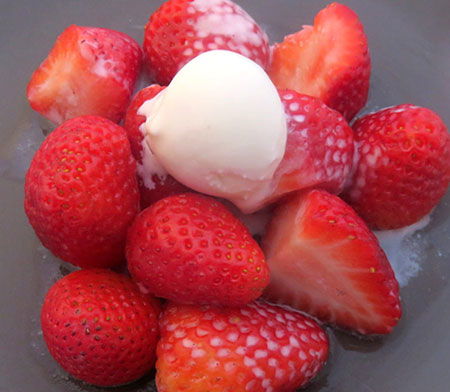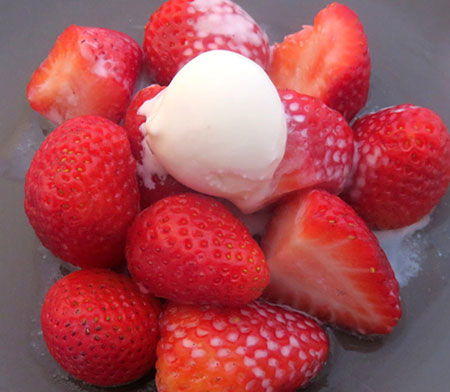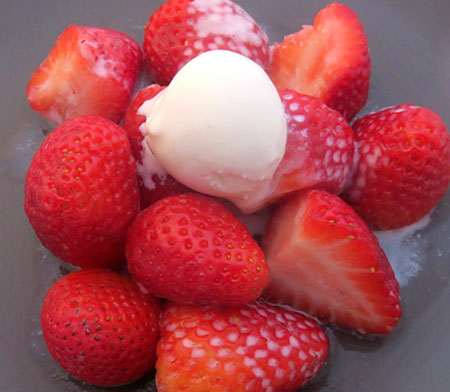Hot Ice Cream

Do you like to experiment with food's taste, texture or appearance? These types of science experiments allow you to be creative and learn about science—and most of the time, the result is yummy as well! Being creative with new foods can result in the weirdest inventions. For example, what do you think about the combination of strawberries topped with a scoop of hot ice cream shown in Figure 1?

 Figure 1. Strawberries topped with a scoop of vanilla hot ice cream.
Figure 1. Strawberries topped with a scoop of vanilla hot ice cream.
Hot ice cream is a creation of molecular gastronomy, an area of cooking in which cooks use tools and ingredients that are usually only used by scientists and the food industry to craft uncommon and new food creations. Hot ice cream is one of these mind-bending creations as it is solid when hot and melts as it cools down to room temperature. That doesn't sound right, does it? Can you see how this is weird?
The special ingredient in hot ice cream is methyl cellulose. Methyl cellulose is modified cellulose, and cellulose is the fibrous material that makes plants strong. To add the methyl cellulose to foods, cooks dissolve it evenly in a solution of other ingredients. Cooks like methyl cellulose because it makes a solution thicken when heated and become a liquid again when cooled back to room temperature. This property is called thermo-gelling. You might question what this could be useful for. As an example, methyl cellulose helps to create liquid fillings in baked goods. The filling is solid while baking, but becomes liquid again when cooled. Methyl cellulose has more properties that can help enhance or preserve flavor, taste, texture, and appearance of food, making it a common food additive.
In this science project, you will use methyl cellulose to make your own hot ice cream recipe. You will experiment with different cooking times and recipe solutions, and measure how fast the resulting hot ice cream melts. Whatever solution or cooking time you are going to try, you can be sure to get a delicious result, so go ahead and try it out!



